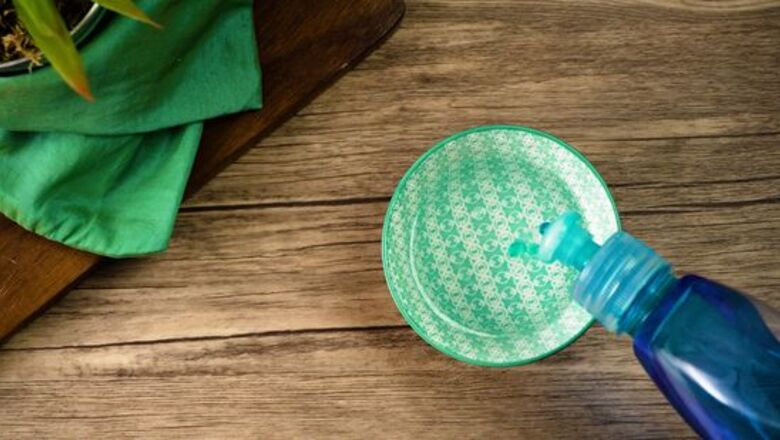
views
Using Soap and Water
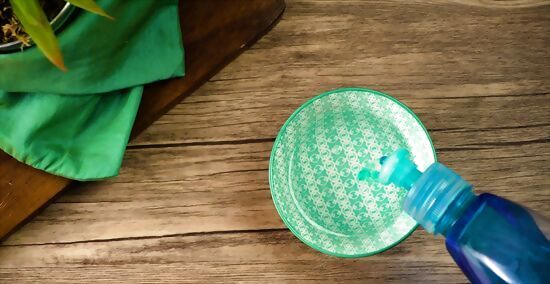
Fill a small bowl with warm water and a few drops of dish soap. With gold-plated jewelry, there isn’t a need to buy special jewelry-cleaning products. Gently swish the water until it gets sudsy from the dish soap. The warm water helps break down dirt and grime. If dish soap isn’t quite cutting it on a very dirty piece of jewelry, try using a 1:1 mix of ammonia and water. Soak the jewelry in the water for 60 seconds before scrubbing it and rinsing it off.Tip: If you wear certain pieces of jewelry every day, give them a quick clean once a month or when you can visibly see that the gold isn’t as bright as usual. For pieces worn less often, clean them several times a year as needed.

Soak your gold-filled jewelry in the soapy water for 10-15 minutes. Set a timer so you don’t forget about your task. If you’re cleaning multiple pieces, you can either soak them all together or stagger adding them to the bowl in 5-minute increments. Set the bowl of water somewhere safe away from the edge of the counter. You don’t want to risk it getting tipped over and your pieces potentially getting lost.A Warning about Gemstones: If your piece contains gemstones, don’t leave it to soak. Instead, simply dip it into the water for about 30 seconds before wiping it down with a lint-free cloth.
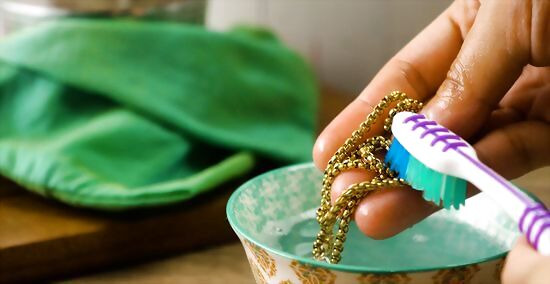
Scrub the piece of jewelry gently with a soft toothbrush. Don’t use a hard-bristled toothbrush, as that could scratch the gold. Pay special attention to settings, designs, and small spaces, as that is where grime is most likely to build up. The piece should come clean very easily. You’ll be surprised at how shiny it gets!
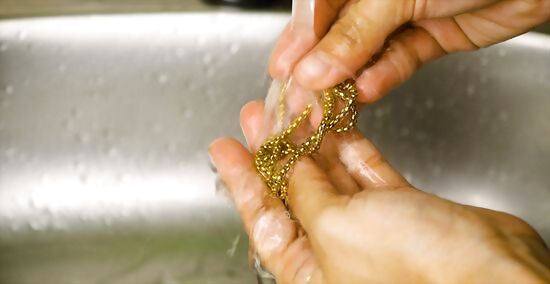
Plug the drain and rinse the jewelry off until all the suds are gone. The last thing you want is to lose a beloved piece of jewelry down the drain, so double-check that the plug is in place. Make sure to rinse the setting, clasps, or links so the piece doesn’t develop any soap buildup. If you do accidentally drop a piece down the drain, don’t turn on the water. Use a 4-pronged tool to try and retrieve it or take apart the trap to see if you can access it that way. If you still can’t get it, call a plumber to come and help.

Pat the jewelry down with a clean lint-free towel. After the piece has been rinsed off, gently wrap it in the lint-free towel and rub it until most of the moisture has been absorbed. Press the towel down into any settings to try and absorb as much moisture as possible. If you use a towel that isn’t lint-free, you risk getting small fibers caught in your jewelry.
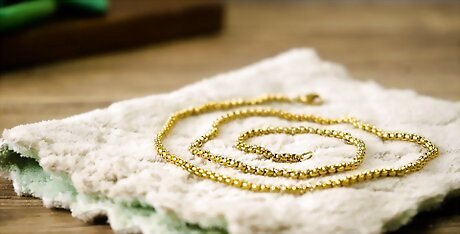
Let the jewelry air-dry completely before putting it away. Never store jewelry while it’s still damp. While gold-filled jewelry is tarnish-resistant, it’s still not a good idea to leave it sitting in moisture for long periods of time. Simply leave the jewelry on the lint-free towel for 3-4 hours and it should be ready to go into your jewelry box. If the piece has gemstones, position it upside down so the water doesn’t stay in the setting. Once the jewelry is inside a jewelry box, it’s much harder for moisture to evaporate because of the heavy lining and lack of fresh air.
Keeping Gold-Filled Jewelry Shiny
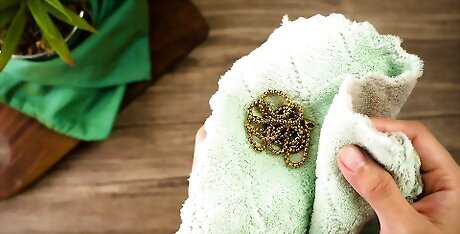
Use a gold-polishing cloth to remove fingerprints on a regular basis. If you notice a few smudges on your gold-filled jewelry, rub them away with a special gold-polishing cloth. It should only take you a minute or two to thoroughly shine any piece. You can buy gold-polishing cloths, or jeweler’s cloths, online or from your local jewelry store. Gold-polishing cloths have a polishing compound on one side of the cloth. The other is used to buff the jewelry. If you don’t have one, use a soft lint-free towel instead. Your jewelry might not get as shiny as it would with a jeweler’s cloth, but it’ll be free of fingerprints and smudges.
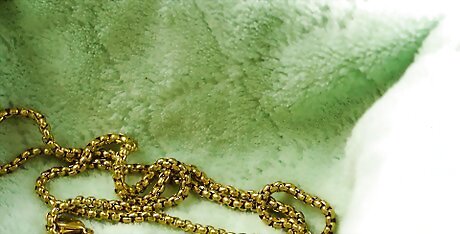
Store your gold-filled jewelry in a velvet-lined box. Keep your pieces in individual compartments and away from other pieces of jewelry so they don’t get tangled, bumped, or scratched. For pieces that you wear daily, use a small jewelry dish to keep them safe overnight. You could also store each piece in an individual cloth bag.

Keep your jewelry box in a cool, dry location. Avoid putting your jewelry box near heating vents, and also try to keep it away from windows where it might come into contact with a lot of direct sunlight. Put it somewhere the temperature doesn’t fluctuate as much, like a cupboard or closet. If you live in a high-humidity region, put silica packets in the jewelry box to absorb excess moisture. Replace them every 3-4 months. You could also purchase a temperature-controlled case if you’re really concerned about maintaining a constant temperature.
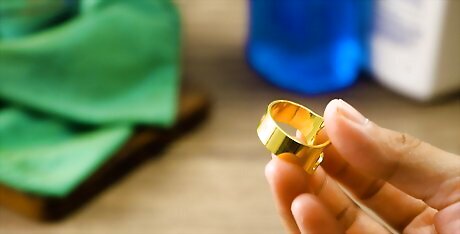
Remove your rings when using household cleaners or bleach. While gold-filled jewelry is much more resistant to general wear and tear, it’ll prolong the life of your pieces even more if you keep them away from chemicals. Put them to the side somewhere safe while you’re cleaning so they don’t get lost. If you don’t want to take off your jewelry while cleaning, wear a pair of rubber gloves.About Gold-Filled Jewelry: Gold-filled jewelry contains a much larger percentage of gold than gold-plated jewelry. It’s made by pressure bonding a thick layer of gold to another metal. It’s much more resistant to tarnish and aging, and it’s also much more valuable than gold-plated jewelry.

Invest in an ultrasonic machine to frequently clean multiple pieces. This type of machine uses ultrasound waves to clean away oil and dirt, and it also polishes your jewelry for you. In general, you will add water to the machine and set the timer and temperature before pouring in a cleaning solution, but make sure to check the manual first. It’s a great option if you have a lot of gold-jewelry that needs to be cleaned all at once. Ultrasonic machines shouldn’t be used on gold-plated jewelry, jewelry with certain gemstones, or jewelry with loose settings.















Comments
0 comment